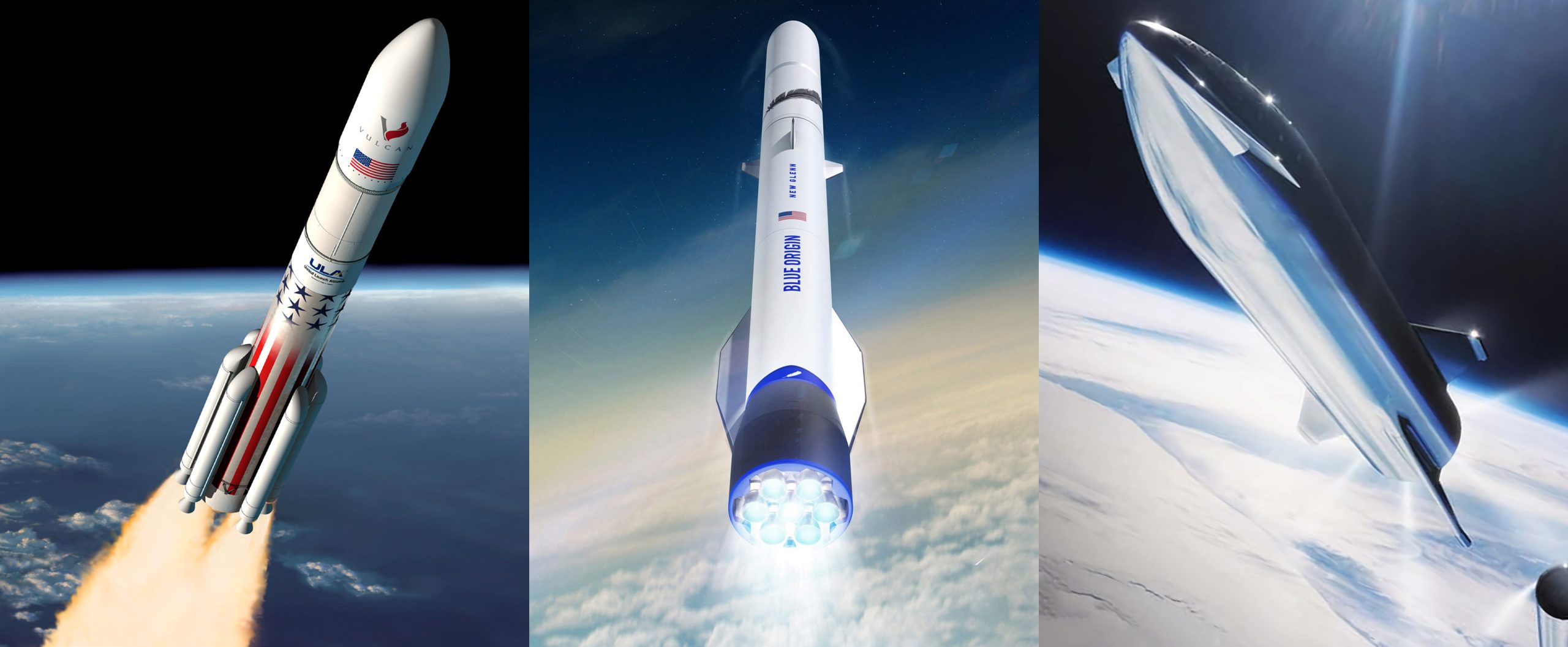
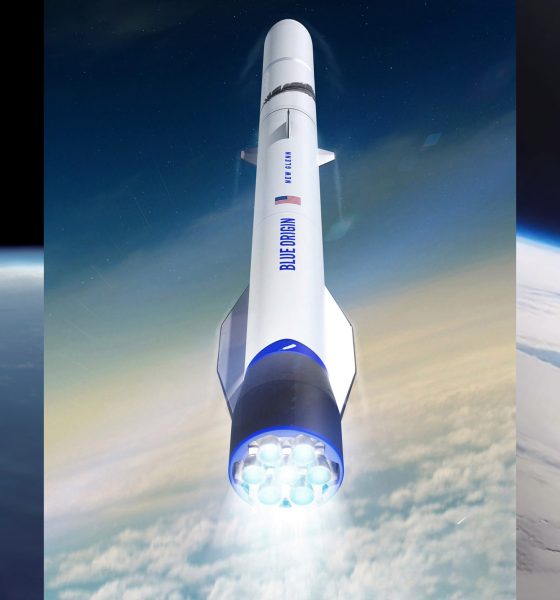
News
SpaceX, Blue Origin, and ULA make major progress in commercial megarocket space race
A new generation of space race is currently underway, but this time it’s not a race to determine which country will reach orbit first, but rather which spaceflight company will successfully reach orbit first with the world’s second generation of super-heavy launch vehicles (SHLVs).
SpaceX, United Launch Alliance (ULA), Blue Origin, and NASA all have plans to build and operate their own SHLV rockets. All entities are deep into design and development and are, for the most part, at various stages of assembly and integration of their first flight hardware, offering an excellent opportunity to compare and contrast the differing approaches at work.
While NASA and ULA are developing rockets featuring an expendable single core supported by solid rocket boosters, SpaceX and Blue Origin have developed reusable designs that will utilize an enormous single core booster powered by multiple engines.
SpaceX: Starship/Super Heavy
Currently the world’s only builder and operator of a super-heavy launch vehicle (Falcon Heavy), SpaceX’s next-generation rocket is undoubtedly the most well known.
The design of SpaceX’s next-generation Starship & Super Heavy rocket is by far the most ambitious. According to company CEO Elon Musk, the new rocket will be comprised of a massive booster deemed “Super Heavy”, featuring as many as 35 Raptor engines capable of producing a total of more than 70,000 kN (15.7M lbf) of thrust at liftoff. The rocket’s upper stage is known as Starship and will be a fully-reusable crew and cargo transport vehicle powered by up to 6 Raptors – 3 sea level-optimized engines and 3 vacuum-optimized engines.
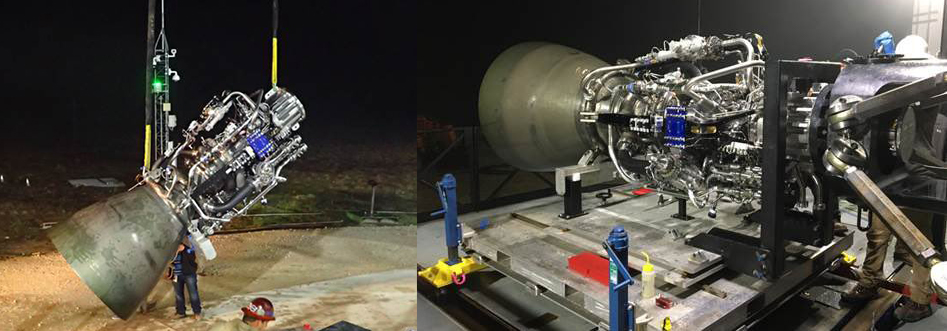
Per a September 2018 design update, Starship and Super Heavy will stand 118 meters (387ft) tall and will be able to launch a minimum of 100 metric tons (220,000 lb) to Low Earth Orbit in a fully reusable configuration, in which both the booster and ship return to Earth for recovery and reuse. On its own, Starship will stand at least 55 meters tall and feature a massive payload bay (or crew section) with a usable volume of no less than 1000 cubic meters (~35,000 ft3). The now-outdated 2018 design also featured almost 90 cubic meters of unpressurized cargo space, a bet less than nine times as much SpaceX’s operational Cargo Dragon spacecraft.
Although CEO Elon Musk has stated that the design of Starship’s legs and control surfaces has since changed, including the addition of legs to Super Heavy boosters, the upper stage’s 2018 design featured two actuating canards and fins/legs, two of which actuate a bit like flapping wings.
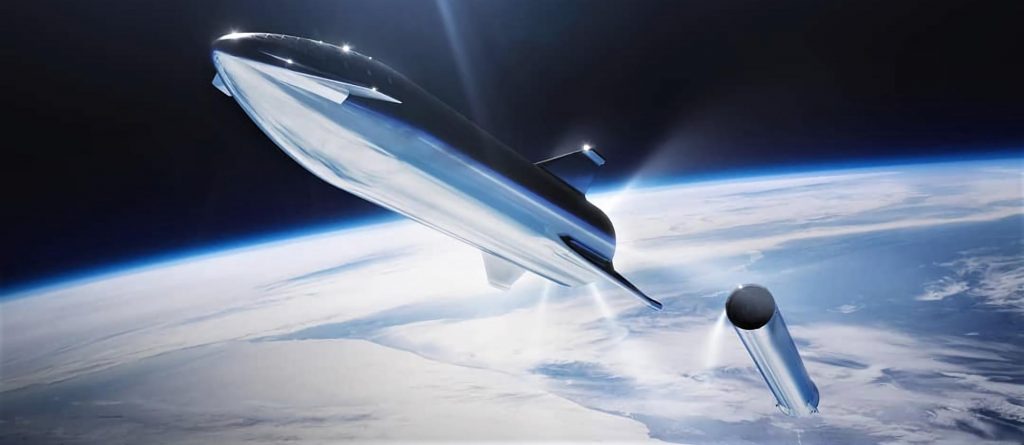
Currently, SpaceX is actively building two orbital Starship prototypes at two separate facilities in Cocoa Beach, Florida and Boca Chica, Texas, as well as an unusual low-fidelity prototype known as Starhopper. Outfitted with a lone Raptor engine (SN06), Starhopper very recently completed a successful 20-meter hop, also the vehicle’s first untethered test flight.
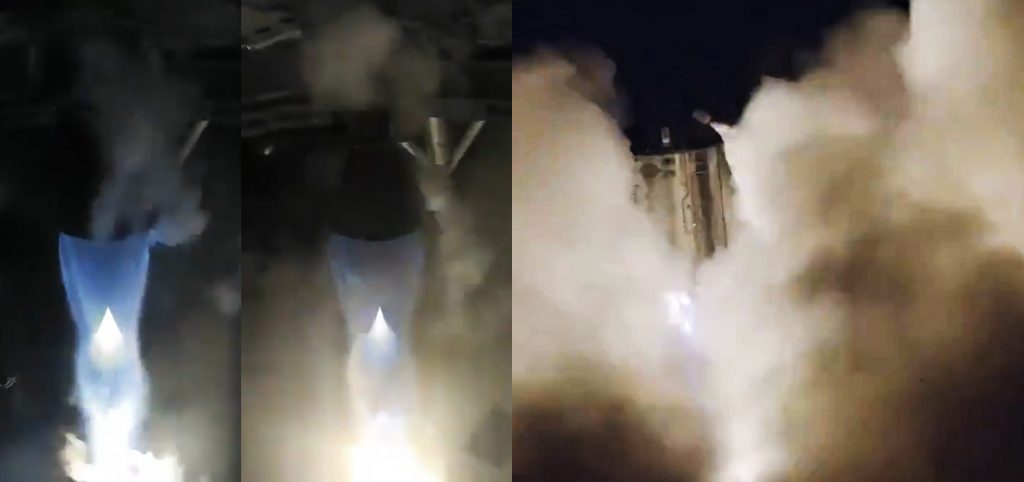
According to Musk, Starhopper is being prepared for a second untethered flight as early as August 16th, in which the rocket will reach a maximum altitude of up to 200 meters (650 ft) and perform a small divert, landing on an adjacent landing pad. Musk also has plans to present a major update on the status of Starship during an official event, scheduled to occur on August 24th in Boca Chica, TX. Aside from hundreds of disconnected snippets in the form of Musk’s prolific tweets, this will mark the first official presentation on Starship since SpaceX made the radical leap from carbon fiber to stainless steel.
SpaceX has taken a truly unprecedented approach to Starship and Super Heavy production and is currently assembling two full-scale Starship prototypes (Mk1 and Mk2) outside with little to no cover, although some spartan covered production facilities are simultaneously being built.
Blue Origin: BE-4 for all
On the near-opposite side of the spectrum, Blue Origin and ULA have formed a partnership in the sense that both companies will ultimately use the same Blue Origin-built engines to power the boosters of their own next-generation launch vehicles. ULA has decided to acquire Blue-built BE-4 engines for its Vulcan Heavy rocket, motivated primarily by the fact that the company will no longer be able to legally import the Russian-built RD-180 used on Atlas V after 2022 as a result of US sanctions.
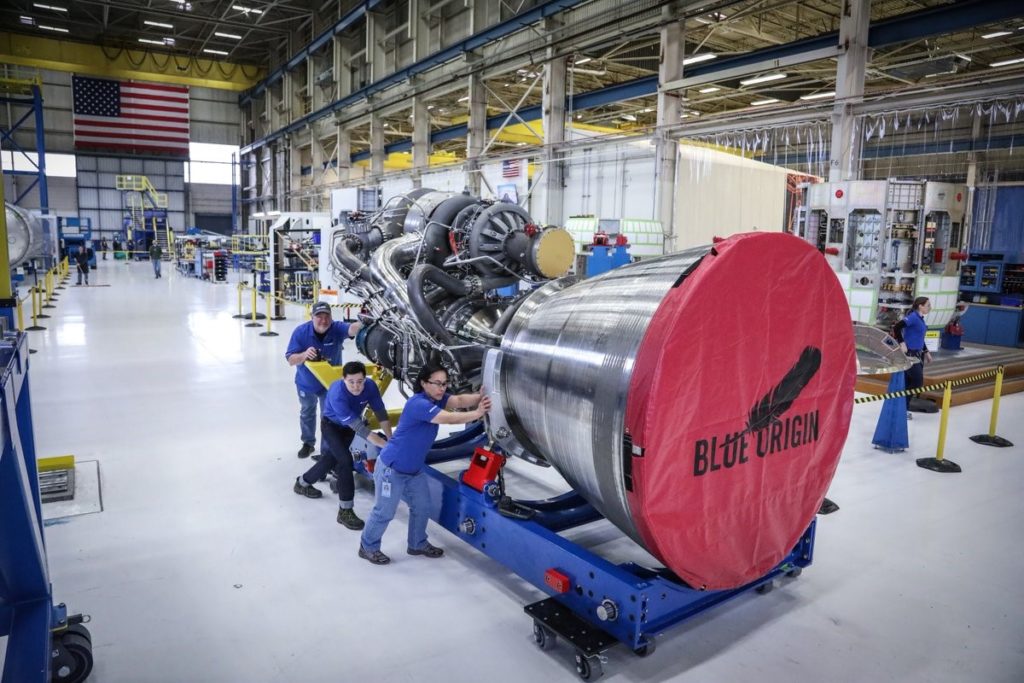
First and foremost, though, Blue Origin is developing BE-4 as the primary propulsion of the company’s own two-stage super heavy-lift rocket, known as New Glenn. New Glenn’s first stage will be powered by 7 of the extremely powerful oxygens, utilizing liquefied natural gas (LNG) and liquid oxygen to produce at least 2,450 kN (550,000 lbf) of thrust. Altogether, New Glenn will lift off with a maximum thrust of 17,100 kN (3.85m lbf) of thrust at sea level.
Unintuitively, New Glenn will actually produce a full 33% less thrust than SpaceX’s Falcon Heavy (~23,000 kN or 5.1M lbf) at liftoff but will likely be able to crush Falcon Heavy’s performance to higher orbits while still in a reusable configuration. This is thanks in large part to the greater efficiency of a single-core rocket, as well as the greater efficiency of its methane-powered BE-4 boost-stage engines and hydrogen-powered BE-3U upper stage engines. According to Blue, New Glenn will be able to launch 45,000 kg to LEO and 13,000 kg to GTO while still recovering the booster, compared to Falcon Heavy’s 8,000-10,000 kg GTO performance.
New Glenn will stand 95 meters (313 ft) tall and feature the largest payload fairing in operation, measuring 7m (23 ft) wide and in diameter. New Glenn’s booster will follow in the footsteps of Blue Origin’s relatively tiny New Shepard and will rely on actuating fins for in-atmosphere maneuvering, as well as two fixed wing-like strakes that will partially function as wings during recovery. New Glenn will also feature six retractable landing legs and land on a modified ship, much like SpaceX’s Falcon family.
While Blue Origin has scarcely published a word or photo on New Glenn’s production progress since its September 2016 reveal, the company does provide small updates on the status of its BE-4 engine every few months, including a photo of a recent full-power engine test completed on August 2nd at Blue’s Van Horn, Texas facilities.
ULA: Vulcan Heavy
ULA’s next-generation Vulcan Heavy rocket will feature two such BE-4 engines but will be fully expendable for at least 4-6 years after its nominal 2021 launch debut. ULA will continue to lean on their well-worn preference for supplementing liquid propulsion with 2-6 strap-on solid rocket boosters (SRBs), adding as much as ~12,000 kN (2.7M lbf) to booster’s two BE-4s, themselves producing 4,800 kN (1.1M lbf) of thrust
In its largest configuration, Vulcan Heavy will stand 69.2 m (227 ft) tall – just a tad shorter than Falcon 9 – and be capable of launch up to 15 tons (~33,000 lb) to GTO and 30.3 tons (67,000 lb) to LEO.
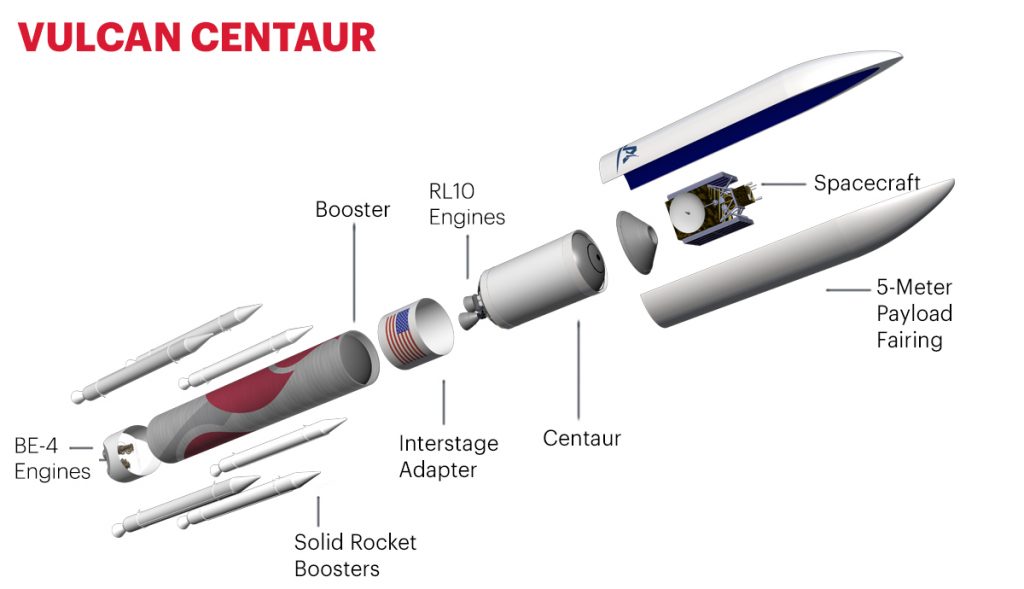
ULA CEO Tory Bruno recently took to Twitter to provide a small Vulcan development update, revealing that the first Vulcan booster was recently completed at the company’s Decatur, Alabama factory. This particularly booster is a structural test article (STA) and will never fly, but it’s still a huge milestone for ULA’s next-generation rocket.
The photos give a great idea of scale as the Vulcan booster is pictured alongside one of the company’s significantly smaller Atlas V booster, 3.8m compared to Vulcan’s 5.4m diameter.
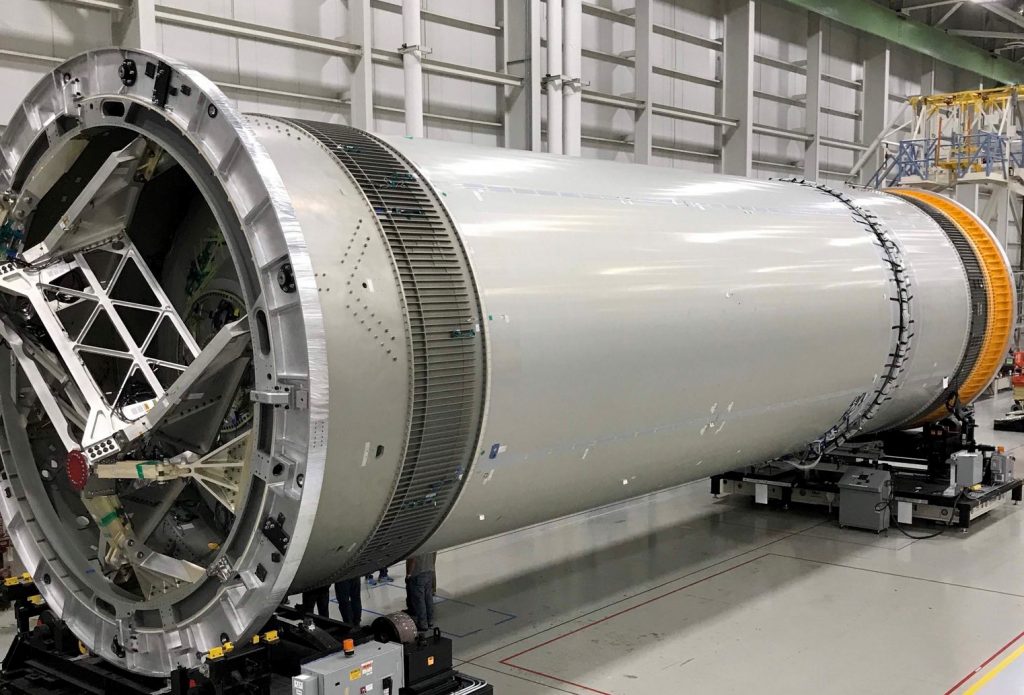
Ultimately, this modern space race will hopefully benefit the spaceflight industry as a whole, particularly with respect to the introduction of New Glenn, hopefully giving SpaceX’s reusable Falcon 9 and Heavy rockets some real technological competition. ULA’s Vulcan is aiming for a H1 2021 debut, followed by New Glenn in late-2021 or 2022.
SpaceX’s Falcon Heavy is already operational and just completed its third launch in June 2019, with several more launch contracts on the books from late-2020 onwards. Its Starship/Super Heavy rocket is in a bit of a chaotic state at the moment, but CEO Elon Musk believes an orbital launch attempt could come as early as early-2020. Meanwhile, NASA is very slowly making its way to the launch debut of its Space Launch System (SLS) rocket, likely to slip into 2022.
With any luck, the early 2020s will be greeted by the operational debuts of two, three, four, or even more extremely capable rockets offering largely unprecedented launch costs. For now, we wait…
Check out Teslarati’s Marketplace! We offer Tesla accessories, including for the Tesla Cybertruck and Tesla Model 3.

News
Tesla dominates in the UK with Model Y and Model 3 leading the way
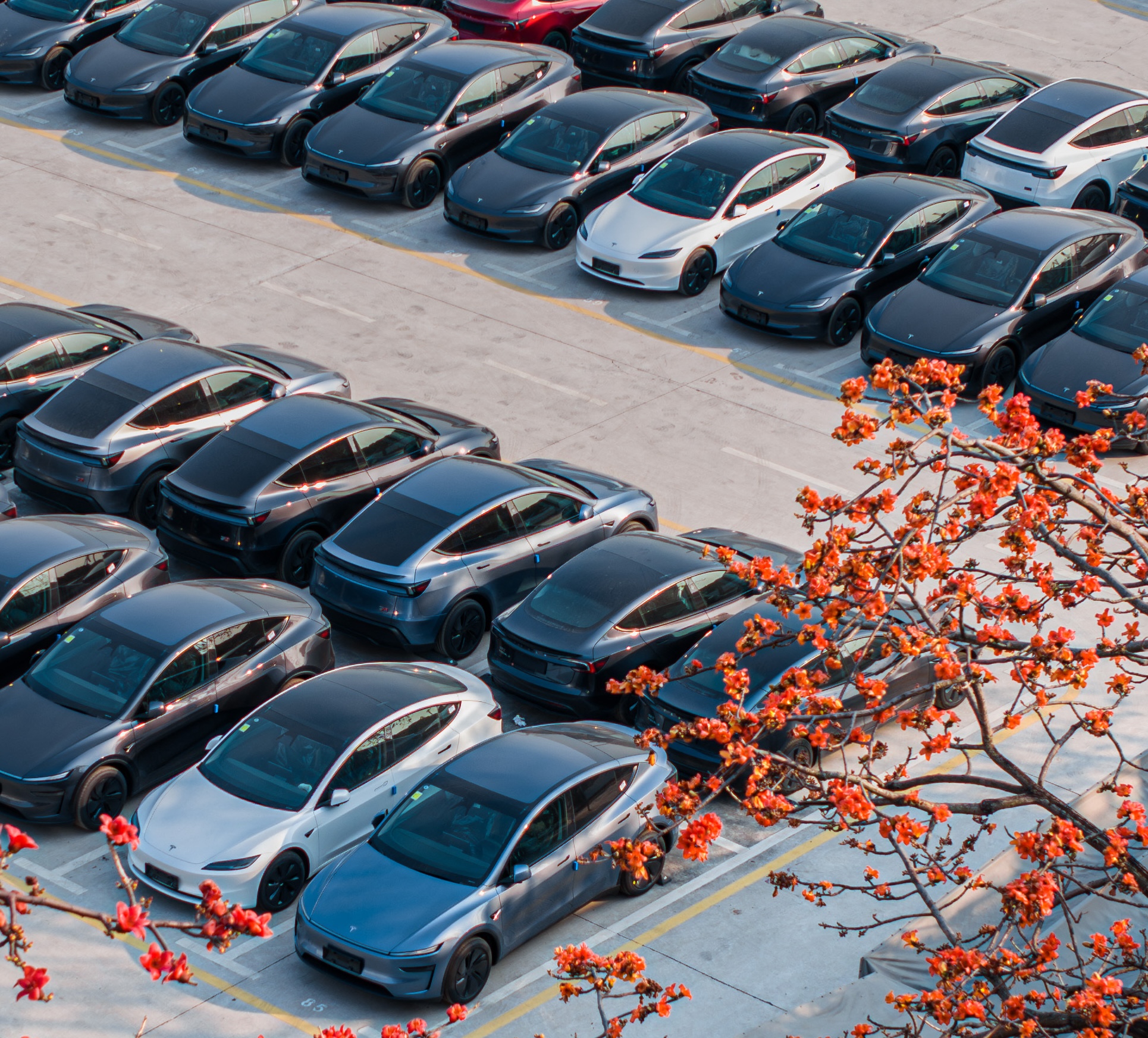
Tesla is dominating in the United Kingdom so far through 2025, and with about two weeks left in the year, the Model Y and Model 3 are leading the way.
The Model Y and Model 3 are the two best-selling electric vehicles in the United Kingdom, which is comprised of England, Scotland, Wales, and Northern Ireland, and it’s not particularly close.
According to data gathered by EU-EVs, the Model Y is sitting at 18,890 units for the year, while the Model 3 is slightly behind with 16,361 sales for the year so far.
The next best-selling EV is the Audi Q4 e-tron at 10,287 units, lagging significantly behind but ahead of other models like the BMW i4 and the Audi Q6 e-tron.
GOOD NEWS 🇬🇧 Tesla is absolutely crushing the UK electric vehicle market in 2025 💥
The numbers are in, and the dominance is clear. With an impressive amount of 42,270 vehicles delivered year-to-date, the brand now commands a solid 9.6% market share of the total auto market 🆒… pic.twitter.com/dkiGX9kzd0
— Ming (@tslaming) December 18, 2025
The Model Y has tasted significant success in the global market, but it has dominated in large markets like Europe and the United States.
For years, it’s been a car that has fit the bill of exactly what consumers need: a perfect combination of luxury, space, and sustainability.
Both vehicles are going to see decreases in sales compared to 2024; the Model Y was the best-selling car last year, but it sold 32,610 units in the UK. Meanwhile, the Model 3 had reached 17,272 units, which will keep it right on par with last year.
Tesla sold 50,090 units in the market last year, and it’s about 8,000 units shy of last year’s pace. It also had a stronger market share last year with 13.2 percent of the sales in the market. With two weeks left in 2025, Tesla has a 9.6 percent market share, leading Volkswagen with 8 percent.
The company likely felt some impact from CEO Elon Musk’s involvement with the Trump administration and, more specifically, his role with DOGE. However, it is worth mentioning that some months saw stronger consumer demand than others. For example, sales were up over 20 percent in February. A 14 percent increase followed this in June.
News
Tesla Insurance officially expands to new U.S. state
Tesla’s in-house Insurance program first launched back in late 2019, offering a new way to insure the vehicles that was potentially less expensive and could alleviate a lot of the issues people had with claims, as the company could assess and repair the damage itself.
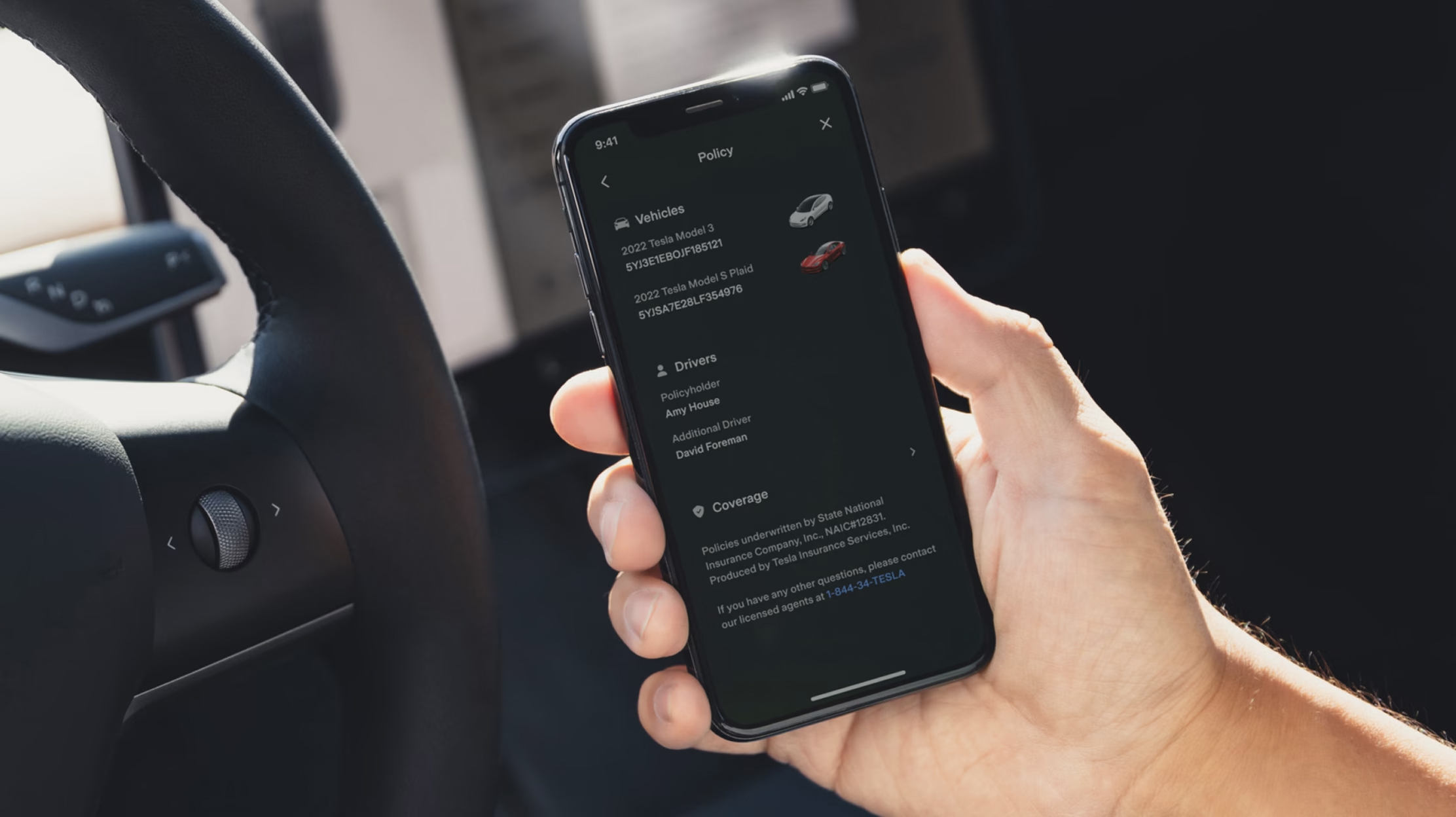
Tesla Insurance has officially expanded to a new U.S. state, its thirteenth since its launch in 2019.
Tesla has confirmed that its in-house Insurance program has officially made its way to Florida, just two months after the company filed to update its Private Passenger Auto program in the state. It had tried to offer its insurance program to drivers in the state back in 2022, but its launch did not happen.
Instead, Tesla refiled the paperwork back in mid-October, which essentially was the move toward initiating the offering this month.
BREAKING: Tesla Insurance has just officially launched in Florida.
This is the first new state to receive @Tesla Insurance in more than 3 years. In total, Tesla insurance is now available in 13 U.S. states (map in thread below of all the states).
Tesla Insurance in Florida uses… pic.twitter.com/bDwh1IV6gD
— Sawyer Merritt (@SawyerMerritt) December 17, 2025
Tesla’s in-house Insurance program first launched back in late 2019, offering a new way to insure the vehicles that was potentially less expensive and could alleviate a lot of the issues people had with claims, as the company could assess and repair the damage itself.
It has expanded to new states since 2019, but Florida presents a particularly interesting challenge for Tesla, as the company’s entry into the state is particularly noteworthy given its unique insurance landscape, characterized by high premiums due to frequent natural disasters, dense traffic, and a no-fault system.
Annual average premiums for Florida drivers hover around $4,000 per year, well above the national average. Tesla’s insurance program could disrupt this, especially for EV enthusiasts. The state’s growing EV adoption, fueled by incentives and infrastructure development, aligns perfectly with Tesla’s ecosystem.
Moreover, there are more ways to have cars repaired, and features like comprehensive coverage for battery damage and roadside assistance tailored to EVs address those common painpoints that owners have.
However, there are some challenges that still remain. Florida’s susceptibility to hurricanes raises questions about how Tesla will handle claims during disasters.
Looking ahead, Tesla’s expansion of its insurance program signals the company’s ambition to continue vertically integrating its services, including coverage of its vehicles. Reducing dependency on third-party insurers only makes things simpler for the company’s automotive division, as well as for its customers.
News
Tesla Full Self-Driving gets sparkling review from South Korean politician
“Having already ridden in an unmanned robotaxi, the novelty wasn’t as strong for me, but it drives just as well as most people do. It already feels like a completed technology, which gives me a lot to think about.”
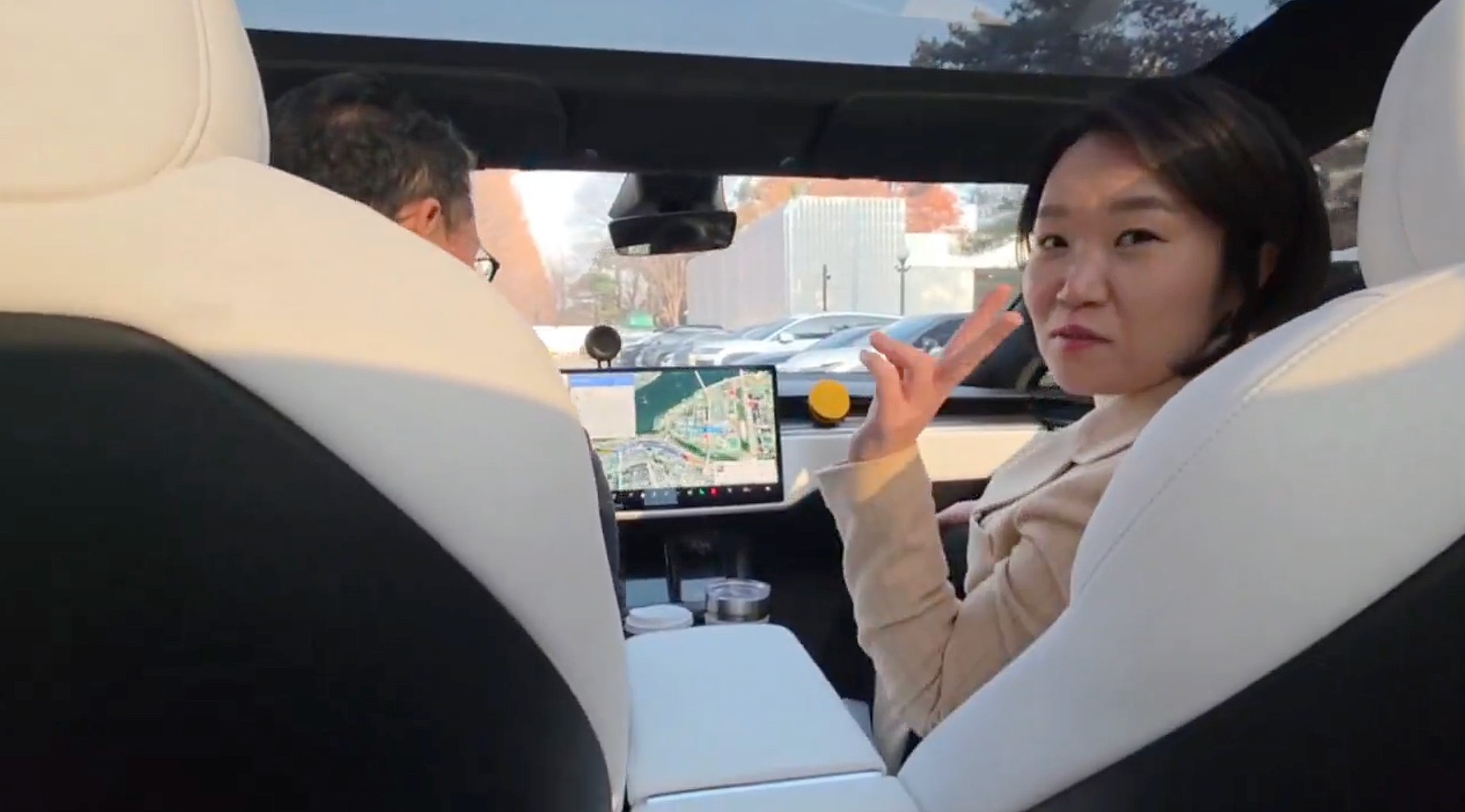
Tesla Full Self-Driving got its first sparkling review from South Korean politician Lee So-young, a member of the country’s National Assembly, earlier this week.
Lee is a member of the Strategy and Finance Committee in South Korea and is a proponent of sustainable technologies and their applications in both residential and commercial settings. For the first time, Lee was able to utilize Tesla’s Full Self-Driving technology as it launched in the country in late November.
Her thoughts on the suite were complimentary to the suite, stating that “it drives just as well as most people do,” and that “it already feels like a completed technology.”
드디어 오늘, 서울에서 테슬라 FSD 체험 했습니다.
JiDal Papa님의 모델S 협찬에 힘입어^^ 파파님 정말 감사합니다.
국회 -> 망원시장 -> 홍익대 -> 국회 복귀 코스였고요.
이미 무인 로보택시를 타봐서 그런지 신기함은
덜했지만, 웬만한 사람만큼 운전을 잘하네요.이미 완성된 기술이라고… pic.twitter.com/8pAidHBpRG
— 이소영 국회의원 (Soyoung Lee) (@im_soyounglee) December 17, 2025
Her translated post says:
“Finally, today I got to experience Tesla FSD in Seoul. Thanks to the Model S sponsored by JiDal Papa^^, I’m truly grateful to Papa. The route was from the National Assembly -> Mangwon Market -> Hongik University -> back to the National Assembly. Having already ridden in an unmanned robotaxi, the novelty wasn’t as strong for me, but it drives just as well as most people do. It already feels like a completed technology, which gives me a lot to think about. Once it actually spreads into widespread use, I feel like our daily lives are going to change a lot. Even I, with my license gathering dust in a drawer, don’t see much reason to learn to drive a manual anymore.”
Tesla Full Self-Driving officially landed in South Korea in late November, with the initial launch being one of Tesla’s most recent, v14.1.4.
It marked the seventh country in which Tesla was able to enable the driver assistance suite, following the United States, Puerto Rico, Canada, China, Mexico, Australia, and New Zealand.
It is important to see politicians and figures in power try new technologies, especially ones that are widely popular in other regions of the world and could potentially revolutionize how people travel globally.








